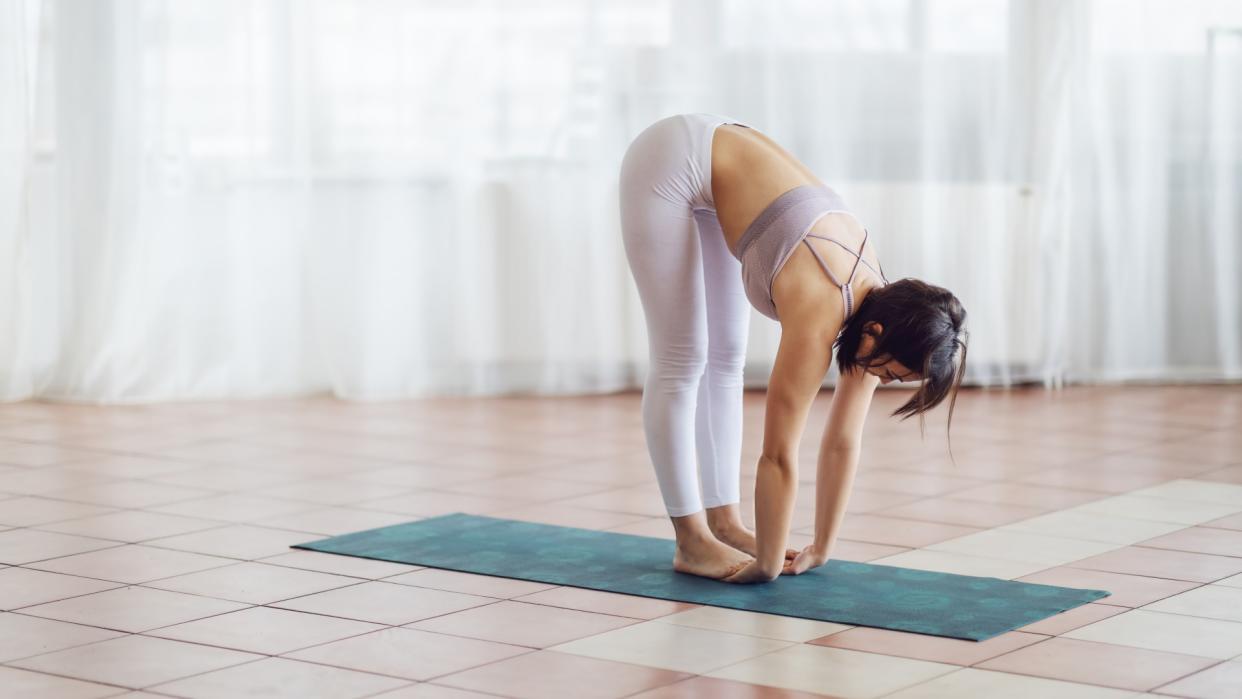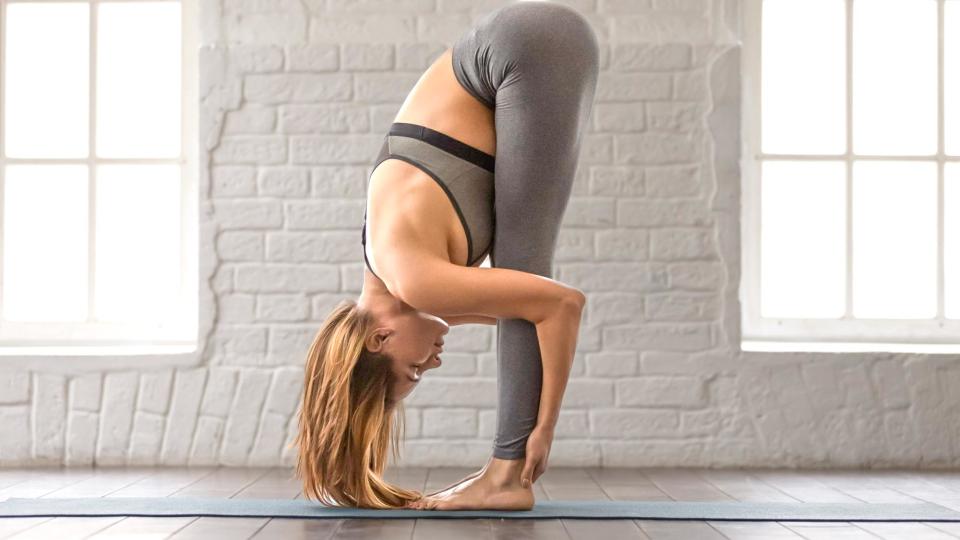I added a 1-minute gorilla stretch to my workouts every day for one week — here's what happened

The gorilla stretch or gorilla pose often crops up during yoga classes, offering a deep stretch for the muscles that run down the back of the body, known as your posterior chain.
To do the gorilla stretch, simply stand on one of the best yoga mats for supporting your feet, fold forward, and place both hands, palms facing upward, beneath your feet. Bend your knees, then lift your hips to deliver a deep stretch down the back of your body.
I decided to add a one-minute gorilla stretch to my daily warm-ups for one week before workouts to see what it could do for my tight and overworked hamstrings, and here’s what happened.
How to do the gorilla stretch
Here’s a step-by-step guide to nailing your gorilla stretch:
Start standing with your feet hip-width distance apart
Take a deep inhale and fold forward over your legs as you exhale
Allow your arms to go heavy and your chest to fall toward your thighs, keeping a soft bend in your knees
Place your hands beneath your feet, palms facing upward and fingers pointing toward your heels
Bend your knees as much as you need to until your toes press against the creases of your wrists
Send your weight forward into balls of feet while keeping your heels pressed down into your mat and the backs of your hands flat
Bend your elbows and send them outward as you lift your hips and straighten your legs as much as you can without losing form
Pull your chest toward your thighs and look between your legs
Hold the stretch.
Keeping a bend in your knees is fine, especially if you have tight hamstrings, glutes, or lower back muscles. If you can fully straighten your legs, do.
What does gorilla pose stretch?
Gorilla primarily targets the posterior chain, including the lower back, glutes, pelvis, hamstrings and calf muscles. Your hands are positioned under your feet, stretching and massaging the wrists. Beginners to this posture should bend the knees as much as possible to help position the hands underneath the feet.
I added a 1-minute gorilla stretch to my workouts every day for one week — here's what happened
My hamstrings feel more open
The gorilla pose, known as Padahastasana in Sanskrit, delivers a deep strengthening and lengthening stretch. As the upper body presses toward the lower body in a folding motion, it’s important to send your weight forward, toward the balls of the feet, without lifting the heels.
Over a week, spending just one minute on this stretch and focusing on breathing deeply into my back body helped to open my hamstrings and lower back muscles and boosted flexibility.
It’s worth reinforcing that a stretching routine offers temporary relief. Building long-term flexibility requires a mix of mobility work to increase range of motion, stretching, proper form during exercise and adequate recovery efforts. Tools like the best foam rollers and resistance bands are also helpful.
While a systematic review into the efficacy of stretching has found that static stretching might not be hugely beneficial for reducing the risk of injury, there is research to suggest holding a stretch for a minimum of 15 seconds can increase range of motion, especially PNF-type stretches, but they should never be used before exercise as they could hamper your performance efforts.
It’s deeply relaxing

I’ve always found yin yoga — a style of yoga that involves holding postures for several minutes while focusing on your breath — deeply relaxing, if not incredibly difficult to focus my mind. Even just one minute spent stretching daily made me feel calmer and helped me tune into my breathing.
Breathwork, especially diaphragmatic breathing, has been found to reduce anxiety, lower your heart rate and calm the nervous system, moving you from the sympathetic to the parasympathetic nervous system. I found one minute of focusing on a breathing exercise helpful, and I felt relaxed and more focused after performing this stretch.
My hamstrings got tight again after I stopped practicing
If you can find space in your mid back (this depends on your flexibility), you can create a hollow back and lift your sternum. For some people, this might look a little like a C-shape through the spine.
As mentioned before, holding a stretch for at least 15 seconds can help you reach deeper into a stretch, which I learned a lot more about when I visited the StretchLab for a 50-minute session recently.
Your body has a pretty smart method for protecting your muscle spindles from overstretching to protect you from injury. While your stretch reflex is responsible for inhibiting, recognizing when to prevent muscles from overexerting, the Golgi Tendon Organ (GTO) communicates with your brain to override the process and tell muscles to relax, which happens when holding a stretch for long enough to tell your body it's safe.
However, the effects are short-lived, and you’d have to stretch consistently and regularly to benefit. After I stopped performing the gorilla stretch every day, my hamstrings tightened again. It’s certainly one to add to the bank of exercises I need to schedule into my routine more regularly, and training the stretch reflex is something I'll consider putting more focus on.
Here's my verdict on the gorilla stretch
While a week isn't a life changing amount of time, the gorilla stretch offers enough intensity that you can notice immediate results and benefits. For me, I felt notably calmer mentally, most likely because I got to spend a minute just focusing on my breathing, and my hamstrings and lower back felt more open.
I wouldn't perform this stretch every day personally, but several times a week for sure, and it's a great one for the bank of exercises I label "Must remember to try more often!"

